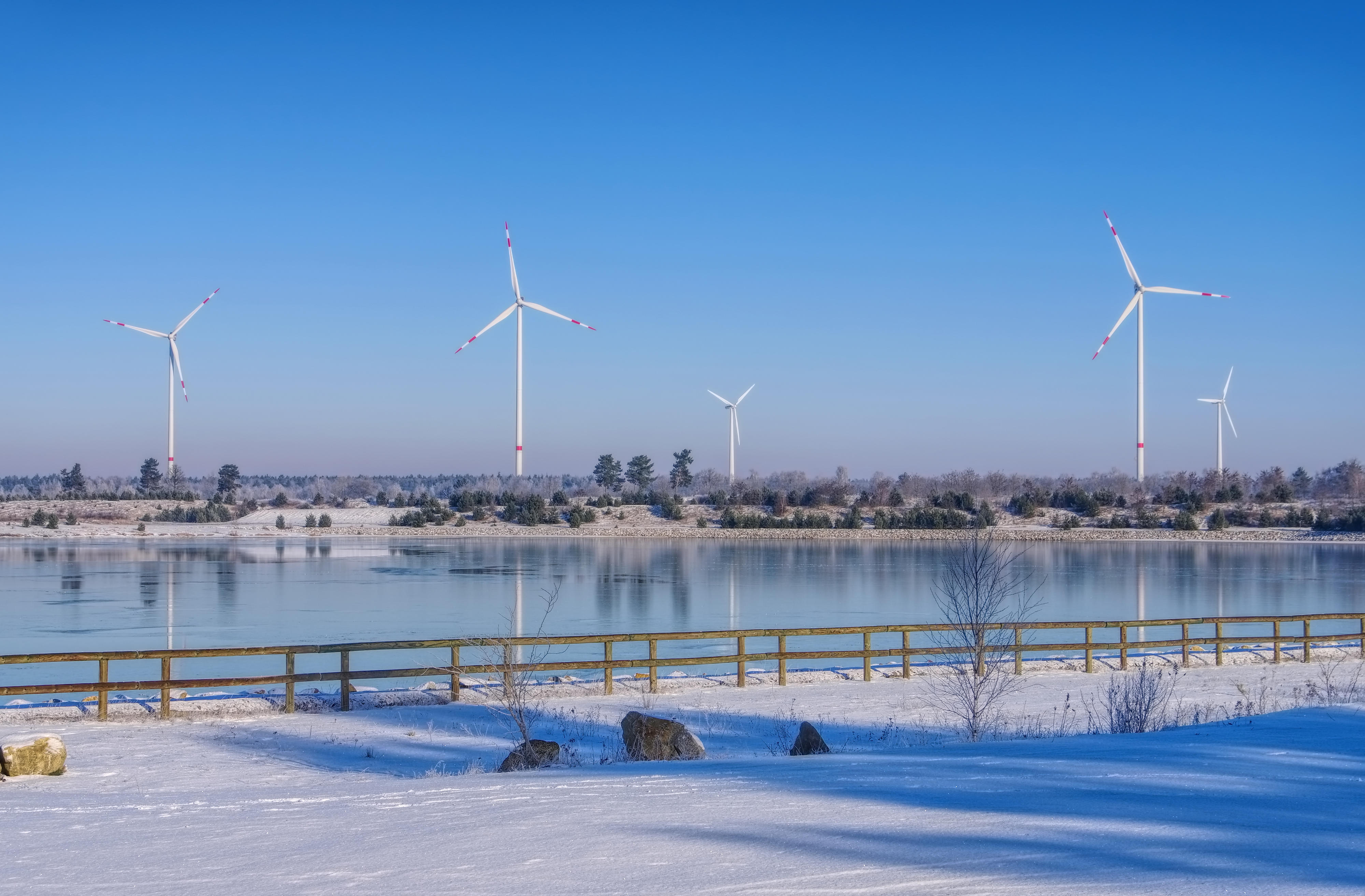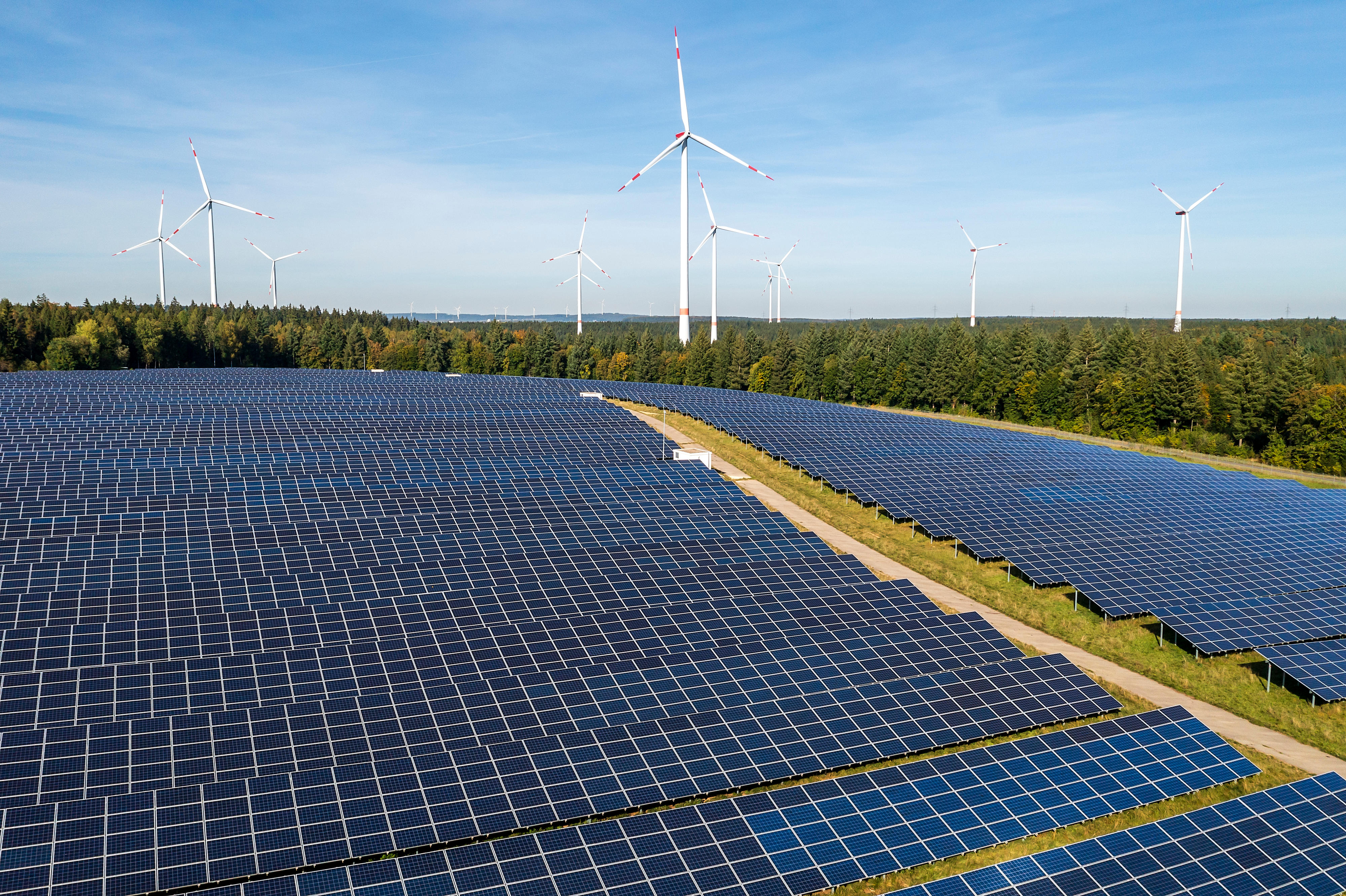Hint: This website is not optimized for your browser version.
Electricity generation in December 2017 and January 2018
27 February 2018 – Overall electricity generation in Germany in December 2017 and January 2018 was around 1% higher compared to a year earlier. Renewable generation increased by 49%. Conventional generation fell year-on-year by 17%.
Germany's total electricity generation from conventional and renewable energy sources in December 2017 and January 2018 amounted to 96.5 TWh. This represents an increase of 1% compared to the same period a year earlier. Renewables produced 39.9 TWh, corresponding to a year-on-year increase of 49%. Generation from conventional sources stood at 56.6 TWh, down 17% on a year earlier. According to SMARD data, renewable energy sources accounted for 28% and conventional fuels for 72% of total generation.
The highest total hourly output of 84 GWh was produced between 11am and 12pm on Thursday, 7 December. The lowest hourly output at 47 GWh occurred early in the morning on Saturday, 27 January. Both figures are similar to the minimum and maximum recorded in the same period a year earlier.
The graph illustrates electricity generation and consumption in December 2017 and January 2018. It shows total electricity generation and consumption on each day in the period. The highest hourly output occurred on 7 December 2017. This is reflected in the overall figures for that day: total output over the whole day was also the highest recorded on any single day in the period.
Highest and lowest renewable output
The majority of the renewable electricity in Germany comes from wind and solar generation. Wind and solar produce their highest output in strong winds and prolonged bright sunshine. In the period from December to January, such conditions – mainly high winds – occurred throughout Germany on Wednesday, 3 January, when Storm Burglind struck Germany with winds exceeding 100 kilometres per hour in some places. This resulted in a total daily wind output of 929 GWh.
Germany's wind turbines generated 84% more in December 2017 than a year earlier.
source: smard.de
Renewable energy reached its highest hourly output at 50 GWh between 12pm and 1pm on Monday, 29 January. This is 21% more than the highest hourly output of 42 GWh in the same period a year earlier and more than two and a half times the average hourly output of 18 GWh in the period from December 2017 to January 2018. Renewables generated their lowest hourly output of 7.5 GWh between 5am and 6am on 11 January 2018, compared to the lowest output of 6.1 GWh in the same period a year earlier.
While this winter's storms led to a high wind output, last winter saw a high output from solar photovoltaics, which benefited from the sunny days in December 2016 and generated a total of 771 GWh. In December 2017, solar output was 494 GWh, around 36% less than a year earlier. Solar output in January 2018 was 730 GWh and 9% below the previous year's figure of 798 GWh. By contrast, wind output in December 2017 and January 2018 was significantly higher than a year earlier, up 58% and 84% respectively.
The graph shows generation and consumption on 29 January 2018, when renewables produced their highest output. Conventional power plants adapted in part to the changes in demand and scaled back generation. The detailed figures can be seen by hovering the mouse over the graph. The orange line illustrates electricity consumption.
Highest and lowest conventional output
Conventional power plants have, as far as technically feasible and economically reasonable, adapted flexibly to the generation from renewables and the changes in electricity consumption. Conventional generation recorded its lowest hourly output of 15 GWh on Christmas Eve, when renewables generated more than two and a half times as much electricity. Conventional plants produced their highest hourly output of 62 GWh between 5pm and 6pm in the early evening of Tuesday, 20 December 2017, when renewables generated just 11.5 GWh.

